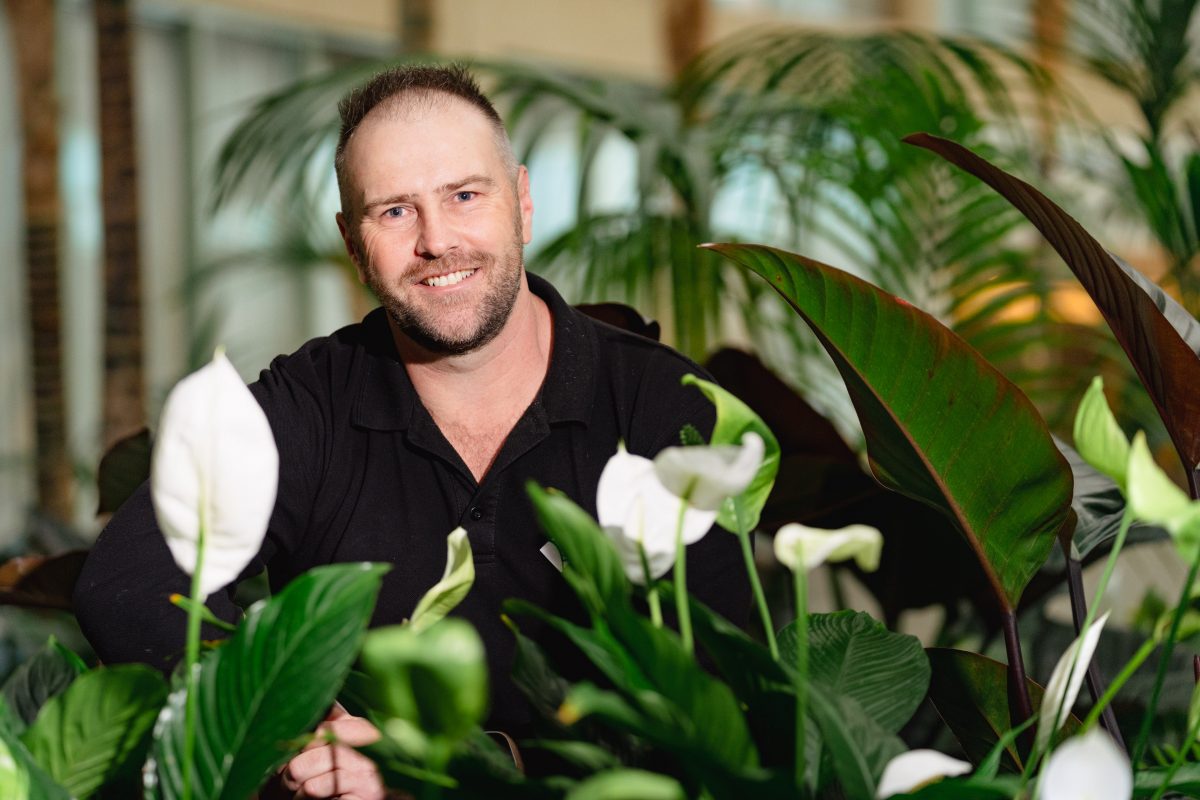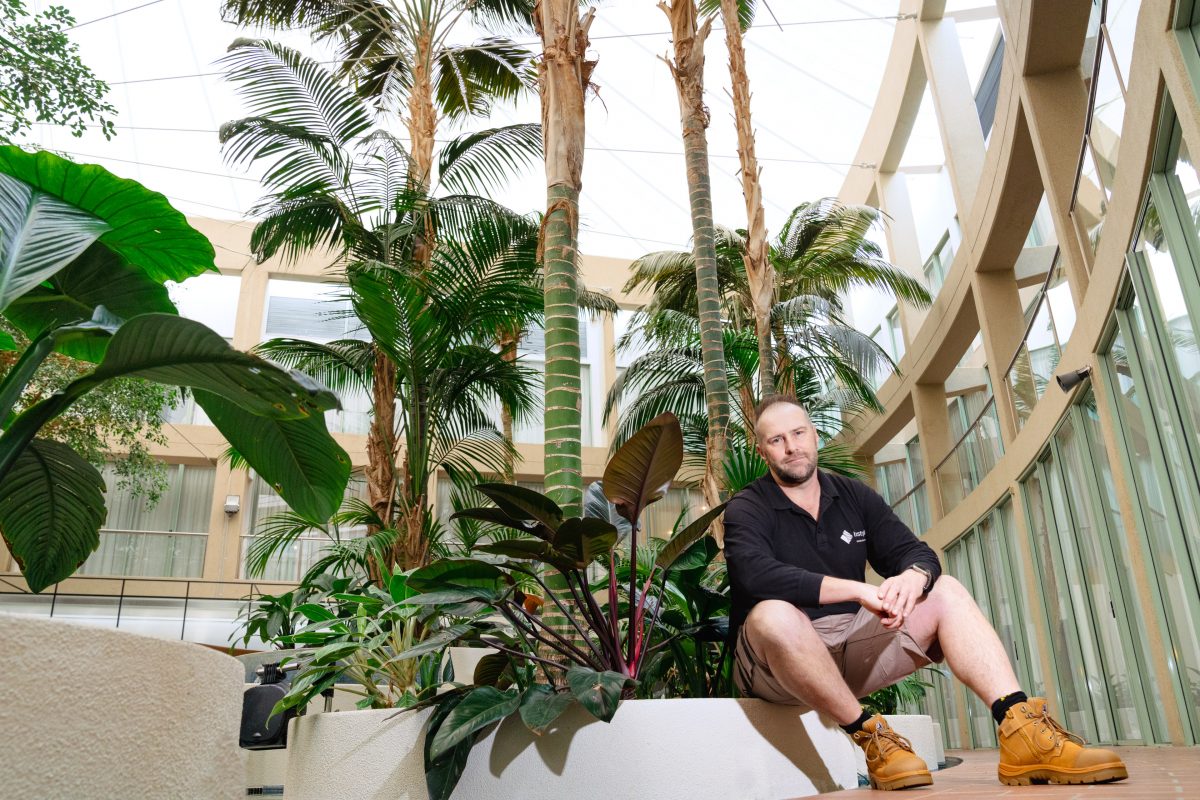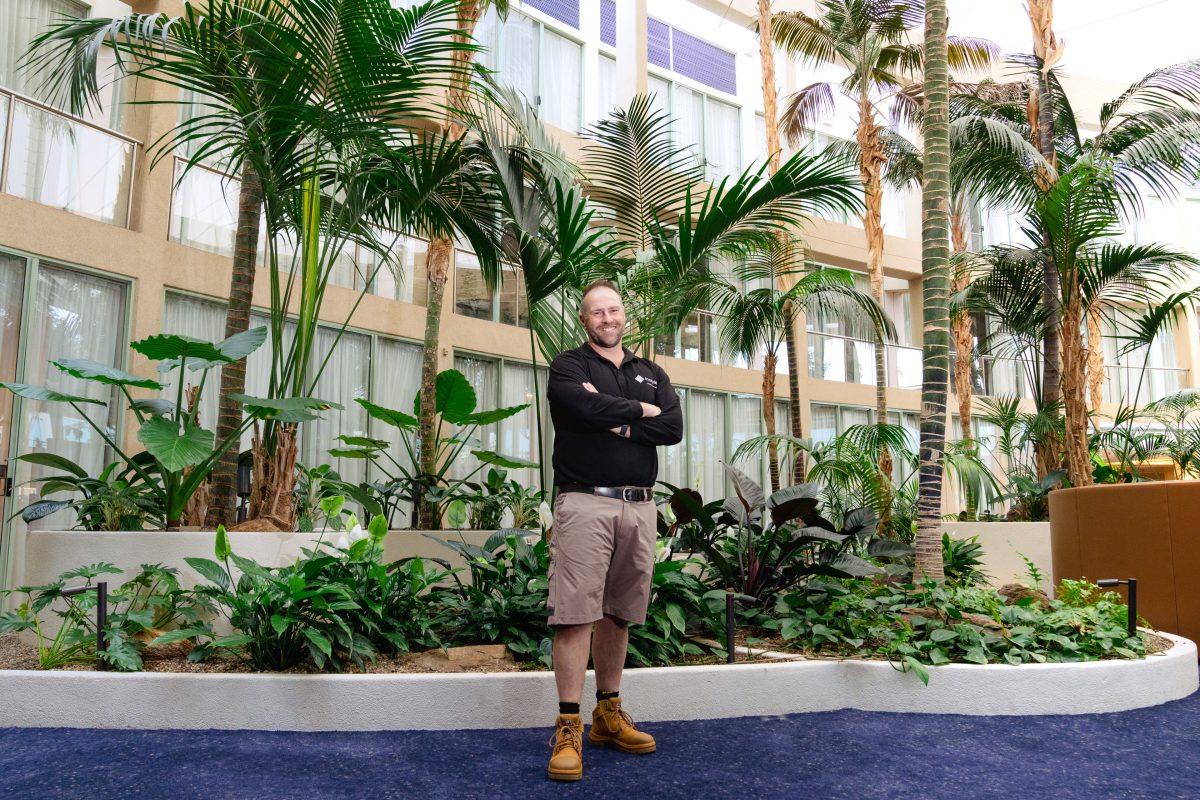
Instyle Indoor Plant Hire general manager Aaron Woods. Photos: Liv Cameron.
Research has found employee absenteeism can cost businesses upwards of $500 per employee per absent day – and that’s not counting indirect costs such as lost productivity.
Fortunately, there is a thing we can introduce to the workplace at relatively little cost, which can reduce staff sickness, boost wellness, improve performance, increase productivity and enhance business image.
Usually, if something sounds too good to be true, it is – but according to horticulturalist and Instyle Indoor Plant Hire general manager Aaron Woods, indoor plants are a rare exception.
“There are endless studies into the benefits of plants to indoor spaces and they all agree on one thing – indoor plants can substantially improve air quality and the knock-on effects for employee wellbeing are proven,” he says.
“Introducing something that sucks up the pollutants that make people ill and produces clean air just makes sense.”

Instyle Indoor Plant Hire general manager Aaron Woods.
According to a University of Technology Sydney report, plants contribute to meeting at least 75 per cent of Indoor Environmental Quality (IEQ) criteria – a critical component to staff wellbeing.
The report cited one international study that showed plant presence resulting in sick leave reduction of up to 60 per cent. Another showed a more than 40 per cent reduction in recorded stress and negative mood averages.
Contributors to poor air quality include particulate matter, which has been linked to respiratory issues, heart problems and cancer, and Volatile Organic Compounds or VOCs – gases emitted into the air from products or processes.
Regular exposure to VOC concentrations has been linked to cancer, kidney and liver damage and central nervous system damage.
Aside from carbon dioxide (CO2), which can lower productivity, other VOC sources include mould, formaldehyde, benzene, radon and asbestos.
Aaron points out that this is particularly scary when considering the everyday office items containing these pollutants.
“These include office furniture and furnishings, plastics and synthetics, paint, solvents and adhesives, chemicals, carpet and computers,” he says.
“You can also have problems with carbon monoxide – a particularly nasty one that HVACs (heating, ventilation and air-conditioning systems) should handle, but should a fault allow small amounts through, plants can clean that, too.”
Aaron added that poor air quality also often contributes to Sick Building Syndrome or SBS – a phenomenon in which building occupants experience acute health and comfort problems that seem to relate to time spent in the building but with no identifiable cause.

Instyle Indoor Plant Hire general manager Aaron Woods.
While some plants can absorb more air pollutants than others, any green shoot, given adequate light, can remove CO2 and release equal amounts of oxygen.
Aaron says for optimal filtering, a good rule of thumb is to have one 200 ml potted plant per person in an office.
“In terms of the VOC ‘parts per million’ a plant can filter, that small plant can greatly help that individual,” he says.
“But in terms of placement you should also consider where people tend to congregate most.”
From potted plants to atriums, hanging plants to green or vertical walls, there are many ways to incorporate these natural air purifiers into an indoor space.
“Each office space and home has a different aesthetic and each room, a different function,” Aaron says.
“When decking a space out with greenery, you have to consider the practicalities of your space and weigh those against the requirements of the plant species.”
Aaron says with employees returning to the office more and more, many with a new appreciation for their health and wellbeing, the simple addition of greenery can make a big difference.
“For businesses looking to attract staff, plants are known not only to improve wellbeing and therefore, the appeal of an office space but can contribute to a building’s green star rating,” he says.
“They can also be incorporated as an aesthetically pleasing means of dividing spaces and providing screening or distance where needed.”
Not only do plants have a strong capacity to remove VOCs but as concentrations rise, so do removal rates.
Moreover, absorbed VOCs don’t accumulate but are broken down to CO2 and water for the plant.
If there’s one catch, it’s that plants work their magic best when at optimal health.
While a plant’s needs are relatively minimal compared with its benefits, every species has its peculiarities in light, humidity and water to achieve optimal photosynthetic function.
But not every workplace has a resident green thumb; some simply outsource their plant needs externally so that staff can focus on the work.
“Like any living thing, a plant will do its best work when it’s at optimal health – and that can only benefit those around it,” Aaron says.
Visit the Indoor Instyle Plant Hire website for more information.












